The NVIDIA GeForce GTX 1080 Ti Founder's Edition Review: Bigger Pascal for Better Performance
by Ryan Smith on March 9, 2017 9:00 AM EST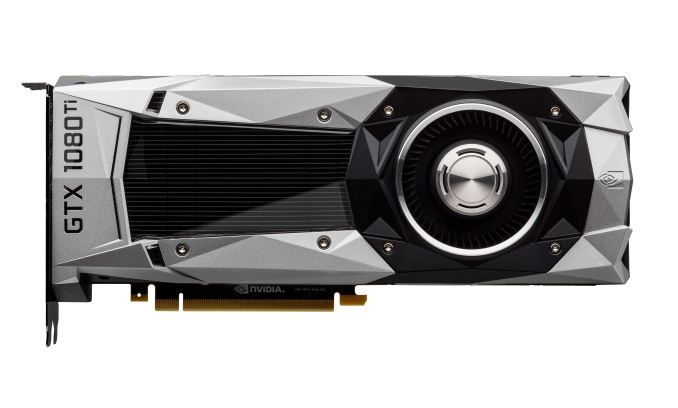
2016 will go down in history as the year where everything went NVIDIA’s way. Last year ended up being a banner year for the company, with NVIDIA’s revenue and profits growing by leaps and bounds to set some very big records. And that outcome is not a fluke; from automotive to datacenter to consumer graphics cards, the company was able to execute almost perfectly, delivering solid products built around their 16nm Pascal architecture.
But why do I bring this up in a video card review? In part because NVIDIA needs to follow up what was their greatest year ever, and in part because if it feels like NVIDIA is taking a bit of a victory lap, you wouldn’t be wrong. When NVIDIA launched the GeForce GTX 1080 back in May they set a new high bar for GPU performance, and they never once had to look back. Consequently the last 10 months have been witness to the NVIDIA’s greatest flagship-level performance lead in at least a decade; the high-end video card market and its lucrative profits have belonged to NVIDIA and NVIDIA alone.
However that was 2016. We’re now 3 months into 2017 and approaching Pascal’s first birthday, and NVIDIA needs to set the stage for the next year to come. If NVIDIA wants to repeat 2016 then they need to refresh their product lineup to deliver better performance and a better value, to capture the still-significant portion of the PC gaming market still on 28nm-generation architectures like Maxwell, Kepler, and GCN 1.x. And, as the saying goes, there’s no better place to start at than the top.
Unveiled last week at GDC and launching tomorrow is the GeForce GTX 1080 Ti. Based on NVIDIA’s GP102 GPU – aka Bigger Pascal – the job of GTX 1080 Ti is to serve as a mid-cycle refresh of the GeForce 10 series. Like the GTX 980 Ti and GTX 780 Ti before it, that means taking advantage of improved manufacturing yields and reduced costs to push out a bigger, more powerful GPU to drive this year’s flagship video card. And, for NVIDIA and their well-executed dominance of the high-end video card market, it’s a chance to run up the score even more.
| NVIDIA GPU Specification Comparison | ||||||
| GTX 1080 Ti | NVIDIA Titan X | GTX 1080 | GTX 980 Ti | |||
| CUDA Cores | 3584 | 3584 | 2560 | 2816 | ||
| Texture Units | 224 | 224 | 160 | 176 | ||
| ROPs | 88 | 96 | 64 | 96 | ||
| Core Clock | 1481MHz | 1417MHz | 1607MHz | 1000MHz | ||
| Boost Clock | 1582MHz | 1531MHz | 1733MHz | 1075MHz | ||
| TFLOPs (FMA) | 11.3 TFLOPs | 11 TFLOPs | 9 TFLOPs | 6.1 TFLOPs | ||
| Memory Clock | 11Gbps GDDR5X | 10Gbps GDDR5X | 10Gbps GDDR5X | 7Gbps GDDR5 | ||
| Memory Bus Width | 352-bit | 384-bit | 256-bit | 384-bit | ||
| VRAM | 11GB | 12GB | 8GB | 6GB | ||
| FP64 | 1/32 | 1/32 | 1/32 | 1/32 | ||
| FP16 (Native) | 1/64 | 1/64 | 1/64 | N/A | ||
| INT8 | 4:1 | 4:1 | N/A | N/A | ||
| TDP | 250W | 250W | 180W | 250W | ||
| GPU | GP102 | GP102 | GP104 | GM200 | ||
| Transistor Count | 12B | 12B | 7.2B | 8B | ||
| Die Size | 471mm2 | 471mm2 | 314mm2 | 601mm2 | ||
| Manufacturing Process | TSMC 16nm | TSMC 16nm | TSMC 16nm | TSMC 28nm | ||
| Launch Date | 03/10/2017 | 08/02/2016 | 05/27/2016 | 06/01/2015 | ||
| Launch Price | $699 | $1200 | MSRP: $599 Founders $699 |
$649 | ||
With the GTX 1080 Ti, NVIDIA is aiming for what they’re calling their greatest performance jump yet for a modern Ti product – around 35% on average. This would translate into a sizable upgrade for GeForce GTX 980 Ti owners and others for whom GTX 1080 wasn’t the card they were looking for.
We’ll start as always with the GPU at the heart of the card, GP102. With NVIDIA’s business now supporting a dedicated compute GPU – the immense GP100 – GP102 doesn’t qualify for the “Big Pascal” moniker like past iterations have. But make no mistake, GP102 is quite a bit larger than the GP104 GPU at the heart of the GTX 1080, and that translates to a lot more hardware for pushing pixels.
GTX 1080 Ti ships with 28 of GP102’s 30 SMs enabled. For those of you familiar with the not-quite-consumer NVIDIA Titan X (Pascal), this is the same configuration as that card, and in fact there are a lot of similarities between those two cards. Though for this generation the situation is not going to be cut & dry as in the past; the GTX 1080 Ti is not strictly a subset of the Titan.
The big difference on the hardware front is that NVIDIA has stripped GP102 of some of its memory/ROP/L2 capacity, which was fully enabled on the Titan. Of the 96 ROPs we get 88; the last ROP block, its memory controller, and 256KB of L2 cache have been disabled. Otherwise, relative to the current top dog on the GeForce side, GTX 1080, we’re looking at a nearly 40% increase in the number of functional units, which will put the GTX 1080 Ti in its own class.
In terms of clockspeeds the GTX 1080 Ti ships with a 1.48GHz base clock and a 1.58GHz boost clock. This is a bit lower than the clocks the GTX 1080 shipped at – 1.6GHz and 1.73GHz respectively – though par for the course for video cards based on these bigger GPUs. Though more importantly, as we’ve seen time and time again with Maxwell and Pascal, the complex nature of NVIDIA’s turbo mechanism means that the average clockspeeds of an NVIIDA card are frequently higher than NVIDIA’s official values, and that means that GTX 1080 Ti is defined more by its performance in the field than its specifications on paper.
Meanwhile on the memory front, the GTX 1080 Ti is the first card NVIDIA is equipping with partner Micron’s second-generation GDDR5X memory. This refined design allows for higher clockspeeds, allowing NVIDIA to ship the GTX 1080 Ti with an 11Gbps memory clock, a 10% increase over the 10Gbps clock found on the Titan and the GTX 1080. This memory is situated on a cut-down 352-bit memory bus – NVIDIA has disabled the last 32-bit channel in part to differentiate the card from Titan X – which works out to 11GB of memory with a total bandwidth of 484GB/sec for the GTX 1080 Ti.
Going by the numbers then, the GTX 1080 Ti offers just over 11.3 TFLOPS of FP32 performance. This puts the expected shader/texture performance of the card 28% ahead of the current GTX 1080, while the ROP throughput advantage stands 26%, and memory bandwidth at a much greater 51.2%. Real-world performance will of course be influenced by a blend of these factors, with memory bandwidth being the real wildcard. Otherwise, relative to the NVIDIA Titan X, the two cards should end up quite close, trading blows now and then.
Speaking of the Titan, on an interesting side note, NVIDIA isn’t going to be doing anything to hurt the compute performance of the GTX 1080 Ti to differentiate the card from the Titan, which has proven popular with GPU compute customers. Crucially, this means that the GTX 1080 Ti gets the same 4:1 INT8 performance ratio of the Titan, which is critical to the cards’ high neural networking inference performance. As a result the GTX 1080 Ti actually has slightly greater compute performance (on paper) than the Titan. And NVIDIA has been surprisingly candid in admitting that unless compute customers need the last 1GB of VRAM offered by the Titan, they’re likely going to buy the GTX 1080 Ti instead.
Moving on, the card’s 250W TDP should not come as a surprise. This has been NVIDIA’s segment TDP of choice for Titan and Ti cards for a while now, and the GTX 1080 Ti isn’t deviating from that. GTX 1080 Ti isn’t necessarily meant to be more efficient than GTX 1080 – we’re still looking at the same architecture on the same manufacturing node – but instead it’s a more powerful GeForce for those users who are willing to trade power consumption for improved performance.
With the specs out of the way, let’s talk about market positioning, pricing, and availability. Like the GTX 1080 before it, NVIDIA is once again going to be working with partners to offer a mix of reference and custom designs. The GTX 1080 Ti will initially be offered in a Founder’s Edition design, while partners are also bringing up their own semi and fully custom designs to be released in April. Importantly however, unlike the GTX 1080 & GTX 1070, NVIDIA has done away with the Founder’s Edition premium for the GTX 1080 Ti. The MSRP of the card will be the MSRP for both the Founder’s Edition and partners’ custom cards. This makes pricing more consistent, though I’m curious to see how this plays out with partners, as they benefitted from the premium in the form of more attractive pricing for their own cards.
As for pricing, with the launch of the GeForce GTX 1080 Ti, NVIDIA and their partners are shuffling their product stacks to accommodate the new card. The GTX 1080 Ti is being priced at $699, which was the original launch price for the GeForce GTX 1080 Founder’s Edition. The GTX 1080 has in turn received a price cut, with the base cards going down to $499, and the Founder’s Edition going down to $549. For better or worse this $699 price tag does work out to being a bit of a price hike over the GeForce GTX 980 Ti – it launched at $649 two years ago – but at the same time it's still more aggressive than I had been expecting given the GTX 1080's launch price last year.
The GTX 1080 Ti will be launching tomorrow, with today’s review embargo designed to whet your appetite (and perhaps open up your wallet). NVIDIA and their partners will be selling the Founder’s Edition cards for the launch, so while it’s likely that the first shipment will sell out, everyone should have their usual choice of tier 1 retailers. Meanwhile in a bit of news that didn’t get disclosed at GDC, NVIDIA is including the GTX 1080 Ti in their latest Prepare for Battle game bundle, an unexpected move given that NVIDIA has shied away from launch bundles on high-end cards in recent years. Under NVIDIA’s latest bundle program, buyers will qualify for a free copy of either Ubisoft’s For Honor or Tom Clancy’s Ghost Recon Wildlands, both of which have launched in the last few weeks.
Finally, looking at the competitive landscape, there’s not much to say right now. GTX 1080 Ti is NVIDIA’s chance to run up the score even further, giving them a solid 1-2-3 position in the market. GTX 1080 Ti will eventually have to do battle with AMD’s RX Vega video cards sometime in the next quarter, but as that’s still months off and Vega is an unknown in terms of performance, it’s not a factor at this time. For GTX 980 Ti and GTX 780 Ti owners, this is the card NVIDIA would like to sell you as your next upgrade. And if you managed to hold off on buying a GTX 1080 FE last year, then the GTX 1080 Ti is going to bring a lot more performance for the same price.
| Spring 2017 GPU Pricing Comparison | |||||
| AMD | Price | NVIDIA | |||
| $699 | GeForce GTX 1080 Ti | ||||
| $499 | GeForce GTX 1080 | ||||
| $399 | GeForce GTX 1070 | ||||
| $249 | GeForce GTX 1060 (6GB) | ||||
| Radeon RX 480 (8GB) | $209 | ||||


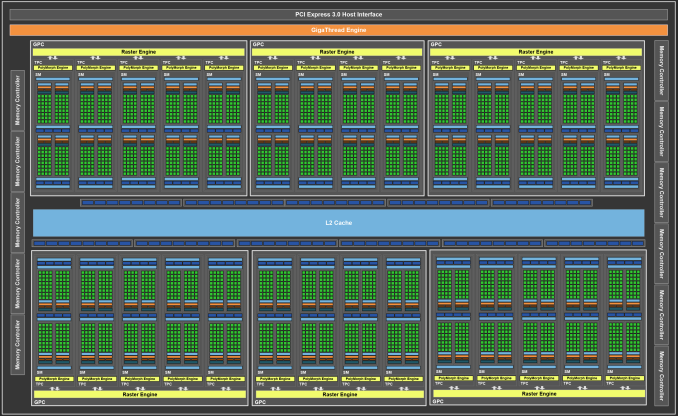
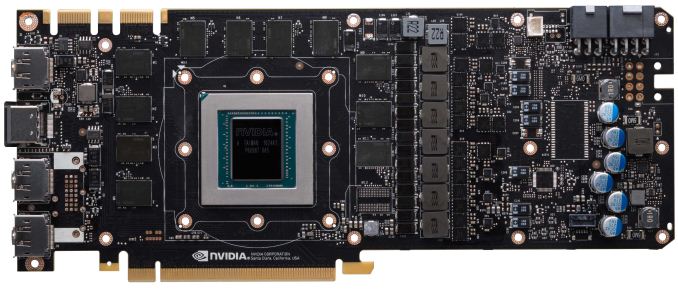
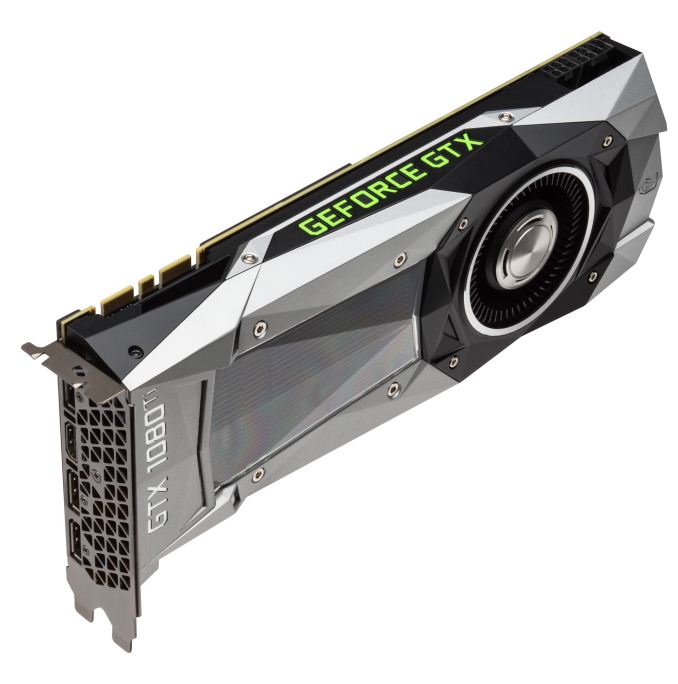
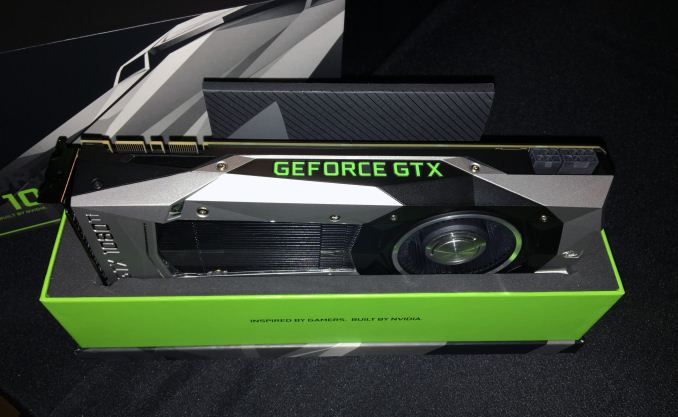








161 Comments
View All Comments
ddriver - Thursday, March 9, 2017 - link
It is kinda both, although I wouldn't really call it a job, because that's when you are employed by someone else to do what he says. More like it's my work and hobby. Building a super computer on the budget out of consumer grade hardware turned out very rewarding in every possible aspect.Zingam - Friday, March 10, 2017 - link
This is something I'd like to do. Not necessarily with GPUs but I have no idea how to make any money tobpay the bill yet. I'vw only started thinking about it recently.eddman - Thursday, March 9, 2017 - link
"nvidia will pay off most game developers to sandbag"AMD, nvidia, etc. might work with developers to optimize a game for their hardware.
Suggesting that they would pay developers to deliberately not optimize a game for the competition or even make it perform worse is conspiracy theories made up on the internet.
Not to mention it is illegal. No one would dare do it in this day and age when everything leaks eventually.
DanNeely - Thursday, March 9, 2017 - link
Something that blatant would be illegal. What nVidia does do is to offer a bunch of blobs that do various effects simulations/etc that can save developers a huge amount of time vs coding their own versions but which run much faster on their own hardware than nominally equivalent AMD cards. I'm not even going accuse them of deliberately gimping AMD (or Intel) performance, only having a single code path that is optimized for the best results on their hardware will be sub-optimal on anything else. And because Gameworks is offered up as blobs (or source with can't show it to AMD NDA restrictions) AMD can't look at the code to suggest improvements to the developers or to fix things after the fact with driver optimizations.eddman - Thursday, March 9, 2017 - link
True, but most of these effects are CPU-only, and fortunately the ones that run on the GPU can be turned off in the options.Still, I agree that vendor specific, source-locked GPU effects are not helping the industry as a whole.
ddriver - Thursday, March 9, 2017 - link
Have you noticed anyone touching nvidia lately? They are in bed with the world's most evil bstards. Nobody can touch them. Their practice is they offer assistance on exclusive terms, all this aims to lock in developers into their infrastructure, or the very least on the implied condition they don't break a sweat optimizing for radeons.I have very close friends working at AAA game studios and I know first hand. It all goes without saying. And nobody talks about it, not if they'd like to keep their job, or be able to get a good job in the industry in general.
nvidia pretty much do the same intel was found guilty of on every continent. But it is kinda less illegal, because it doesn't involve discounts, so they cannot really pin bribery on them, in case that anyone would dare challenge them.
amd is actually very competitive hardware wise, but failing at their business model, they don't have the money to resist nvidia's hold on the market. I run custom software at a level as professional as it gets, and amd gpus totally destroy nvidian at the same or even higher price point. Well, I haven't been able to do a comparison lately, as I have migrated my software stack to OpenCL2, which nvidia deliberately do not implement to prop up their cuda, but couple of years back I was able to do direct comparisons, and as mentioned above, nvidia offered 2 to 3 times worse value than amd. And nothing has really changed in that aspect, architecturally amd continue to offer superior compute performance, even if their DP rates have been significantly slashed in order to stay competitive with nvidia silicon.
A quick example:
~2500$ buys you either a:
fire pro with 32 gigs of memory and 2.6 tflops FP64 perf and top notch CL support
quadro with 8 gigs of memory and 0.13 tflops FP64 perf and CL support years behind
Better compute features, 4 times more memory and 20 times better compute performance at the same price. And yet the quadro outsells the firepro. Amazing, ain't it?
It is true that 3rd party cad software still runs a tad better on a quadro, for the reasons and nvidian practices outlined above, but even then, the firepro is still fast enough to do the job, while completely annihilating quadros in compute. Which is why at this year's end I will be buying amd gpus by the dozens rather than nvidia ones.
eddman - Friday, March 10, 2017 - link
So you're saying nvidia constantly engages in illegal activities with developers?I don't see how pro cards and software have to do with geforce and games. There is no API lock-in for games.
thehemi - Friday, March 10, 2017 - link
> "And nobody talks about it, not if they'd like to keep their job"Haha we're not scared of NVIDIA, they are just awesome. I'm in AAA for over a decade, they almost bought my first company and worked closely with my next three so I know them very well. Nobody is "scared" of NVIDIA. NVIDIA have their devrel down. They are much more helpful with optimizations, free hardware, support, etc. Try asking AMD for the same and they treat you like you're a peasant. When NVIDIA give us next-generation graphics cards for all our developers for free, we tend to use them. When NVIDIA sends their best graphics engineers onsite to HELP us optimize for free, we tend to take them up on their offers. Don't think I haven't tried getting the same out of AMD, they just don't run the company that way, and that's their choice.
And if you're really high up, their dev-rel includes $30,000 nights out that end up at the strip club. NVIDIA have given me some of the best memories of my life, they've handed me a next generation graphics card at GDC because I joked that I wanted one, they've funded our studio when it hit a rough patch and tried to justify it with a vendor promotion on stage at CES with our title. I don't think that was profitable for them, but the good-will they instilled definitely has been.
I should probably write a "Secret diaries of..." blog about my experiences, but the bottom line is they never did anything but offer help that was much appreciated.
Actually, heh, The worst thing they did, was turn on physx support by default for a game we made with them for benchmarks back when they bought Ageia. My game engine was used for their launch demo, and the review sites (including here I think) found out that if you turned a setting off to software mode, Intel chips doing software physics were faster than NVIDIA physics accelerated mode. Still not illegal, and still not afraid of keeping my job, since I've made it pretty obvious who I am to the right people.
ddriver - Friday, March 10, 2017 - link
Well, for you it might be the carrot, but for others is the stick. Not all devs are as willing to leave their products upoptimized in exchange for a carrot as you are. Nor do they need nvidia to hold them by the hand and walk them through everything that is remotely complex in order to be productive.In reality both companies treat you like a peasant, the difference is that nvidia has the resources to make into a peasant they can use, while to poor old amd you are just a peasant they don't have the resources to pamper. Try this if you dare - instead of being a lazy grateful slob take the time and effort to optimize your engine to take the most of amd hardware and brag about that marvelous achievement, and see if nvidia's pampering will continue.
It is still technically a bribe - helping someone to do something for free that ends up putting them at an unfair advantage. It is practically the same thing as giving you the money to hire someone who is actually competent to do what you evidently cannot be bother with or are unable to do. They still pay the people who do that for you, which would be the same thing if you paid them with money nvidia gave you for it. And you are so grateful for that assistance, that you won't even be bothered to optimize your software for that vile amd, who don't rush to offer to do your job for you like noble, caring nvidia does.
ddriver - Friday, March 10, 2017 - link
It is actually a little sad to see developers so cheap. nvidia took you to see strippers once and now you can't get your tongue out their ass :)but it is understandable, as a developer there is a very high chance it was the first pussy you've seen in real life :D